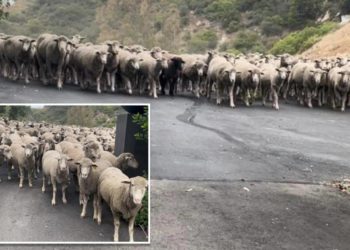Hunting for varieties. Geneticist Melinda Yerka of the University of Nevada has led the development of 200 sorghum varieties. The goal: create more drought-resistant strains that can feed both livestock and people in a changing climate.
Fifth in the lineup. While sorghum isn’t a staple in most diets, it ranks as one of the world’s most important cereal crops—after rice, wheat, corn, and barley. The Food and Agriculture Organization of the United Nations estimated global production at 58 million tons in 2022, with Nigeria, Sudan, and the U.S. leading the way.
In the U.S., sorghum is used mainly as livestock feed, but it’s also widely consumed as food. Gluten-free and rich in nutrients, sorghum is a staple in several Asian and African cuisines—particularly in Africa, where the grain originated.
You can also ferment it like wheat and barley to produce beer or converted into biofuels.
High tolerance. Beyond its potential uses, Yerka’s team emphasizes the durability of the newly developed varieties. Preliminary studies show these strains have high drought tolerance. Some also feature elevated protein levels and more digestible starch.
Based on early tests, the team estimates that the crops thrive on 20 to 25 inches of water per year—significantly less than what’s required for crops like alfalfa.
Prepared for semi-arid conditions. The team developed the new varieties with the semi-arid conditions of the western U.S. in mind. However, the researchers believe these grains could also benefit livestock producers in similarly dry climates around the world by providing a feed option that consumes less water.
“Many dairy feeds and specialty grain crops in the U.S. are facing lower or variable yields due to late frosts, floods, heat and drought associated with climate change, highlighting the need for more resilient alternatives that can thrive under changing climatic conditions,” Yerka said.
Commercializing the breakthrough. Yerka’s lab at the University of Nevada has operated since 2017, and in 2023, it launched its own venture—Yerka Seeds—to bring its work to market.
Image | Luis Rodriguez (Unsplash)
Related | Researchers Have Discovered the Best Crop for Agrovoltaic Installations: Tomatoes
The post Scientists Developed 200 Sorghum Varieties, a Little-Known Grain That Withstands Drier Conditions appeared first on Xataka On.




